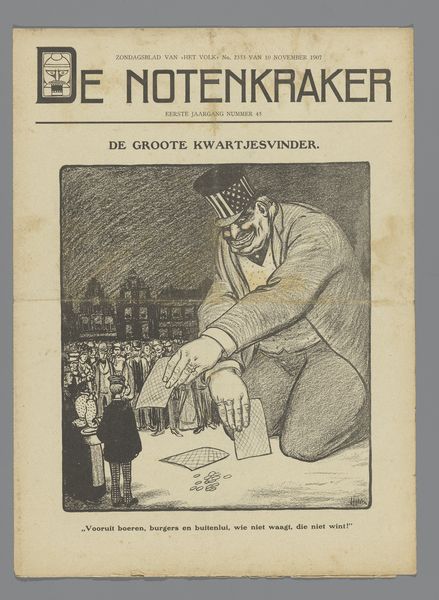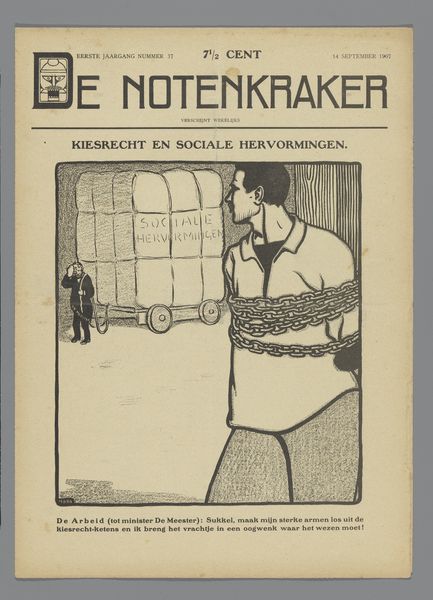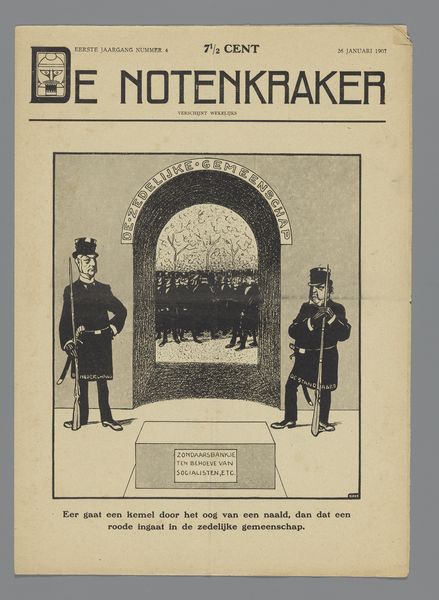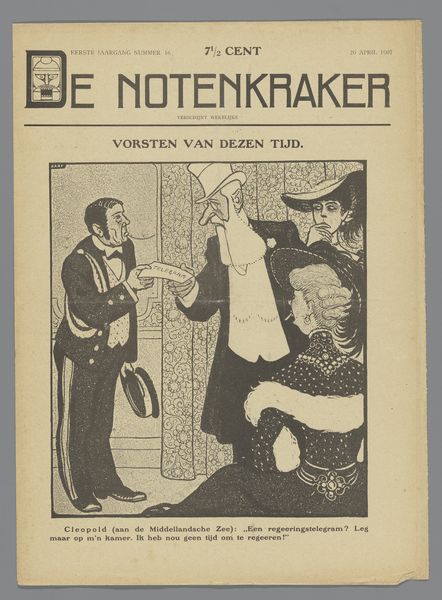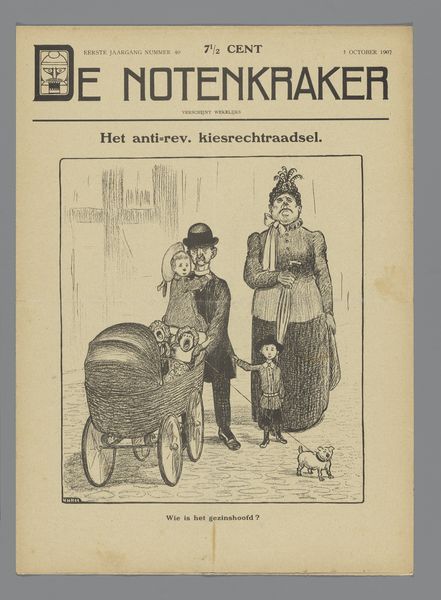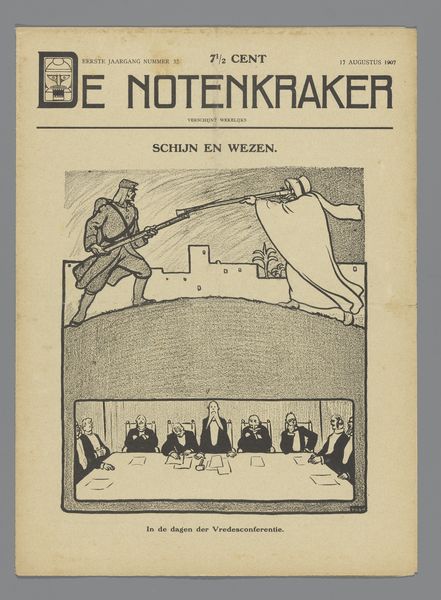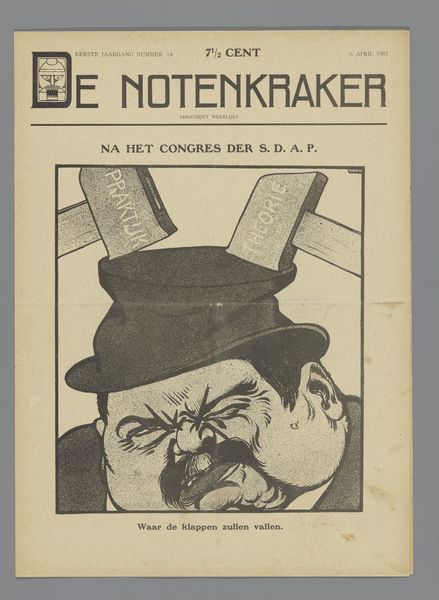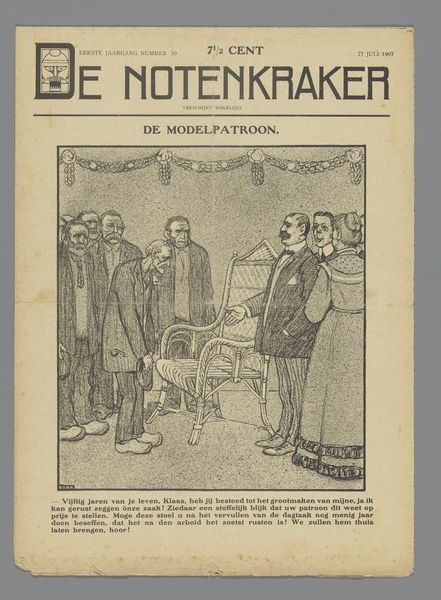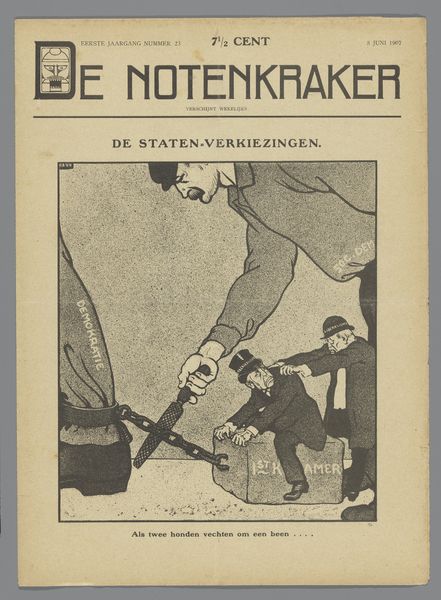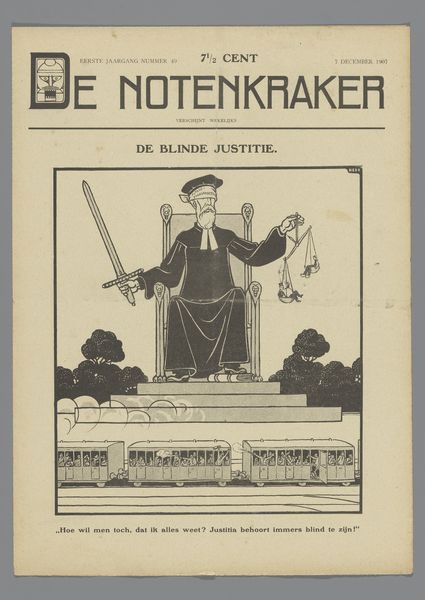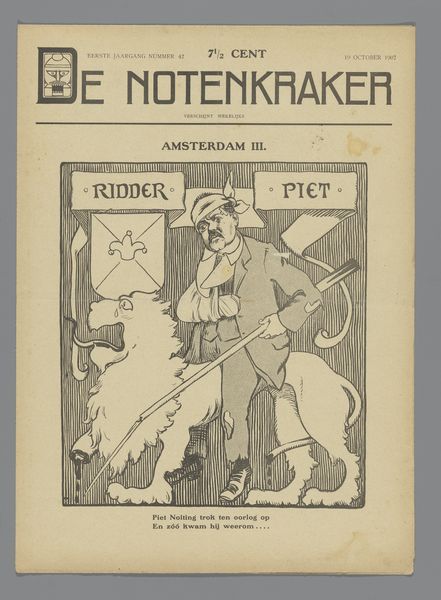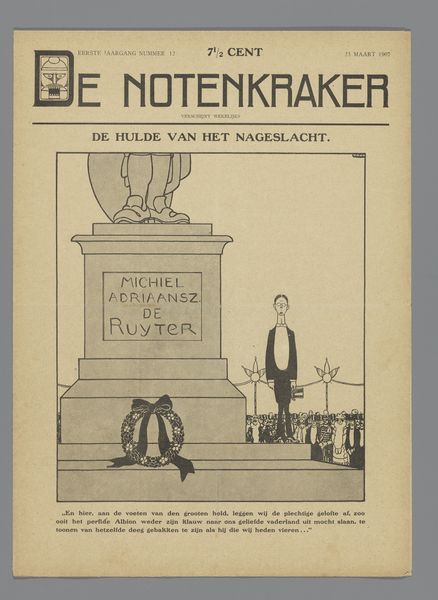
drawing, print, paper, ink
#
portrait
#
drawing
# print
#
caricature
#
paper
#
ink
#
genre-painting
#
modernism
Dimensions: height 348 mm, width 252 mm
Copyright: Rijks Museum: Open Domain
Editor: So, here's a striking drawing from possibly 1907 by Albert Hahn, titled "De Notenkraker, 13 juli 1907 / Sam. van Houten uitgesmeten"—it seems to be some kind of political commentary. It depicts two men, and there's a definite air of confrontation. What do you see in this piece that helps contextualize it? Curator: This is a fascinating example of the socio-political role of art. "De Notenkraker" was a Dutch satirical magazine, and Hahn was a key artist contributing visual critiques. What immediately strikes me is how Hahn utilizes caricature to comment on power dynamics within Dutch society. The central figure, likely Sam van Houten, is visually pushed back, his exaggerated features and formal attire contrasting with the other man’s more working-class appearance. Considering this context, how do you interpret the architectural setting, specifically that large building in the background? Editor: I hadn't focused on that so much, but it almost looks like a church or a governmental building with religious or royal attributes. Given the title – "Sam van Houten thrown out" – could it represent being exiled from the establishment or losing societal approval? Curator: Precisely. And note the publication details on the page. It allows this message to spread rapidly and be consumed publicly and politically. Satirical prints like this, appearing in publications like "De Notenkraker," were instruments of social and political discourse, influencing public opinion and challenging the status quo. Think about how political imagery functions today – do we see similar strategies being employed? Editor: Absolutely, with memes and political cartoons online. It’s really interesting to see these roots in earlier forms of print media, using art to influence a wider audience and be critical of those in power. Curator: Exactly! We observe that, despite temporal shifts, art perpetually functions as a visual language intricately linked to political power and public perception.
Comments
No comments
Be the first to comment and join the conversation on the ultimate creative platform.
